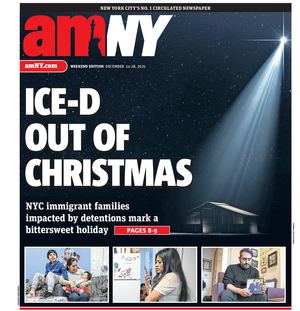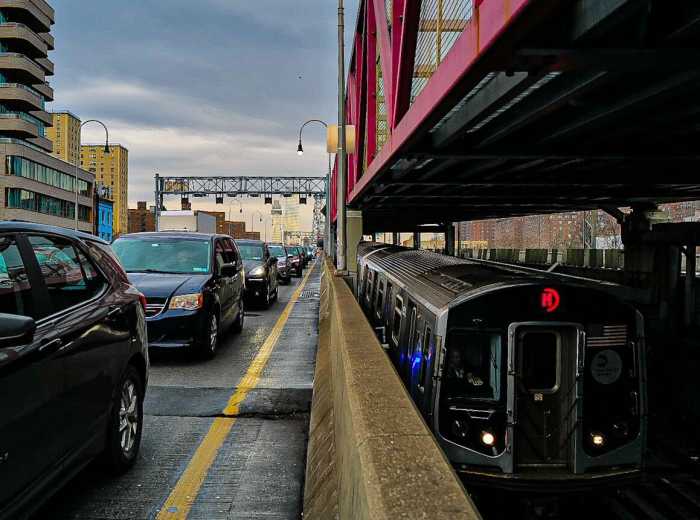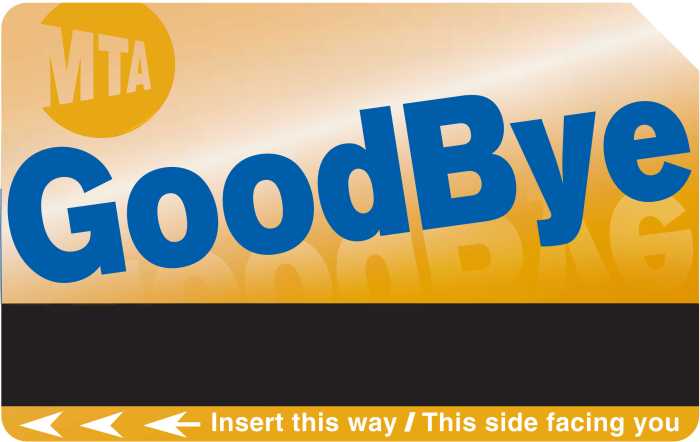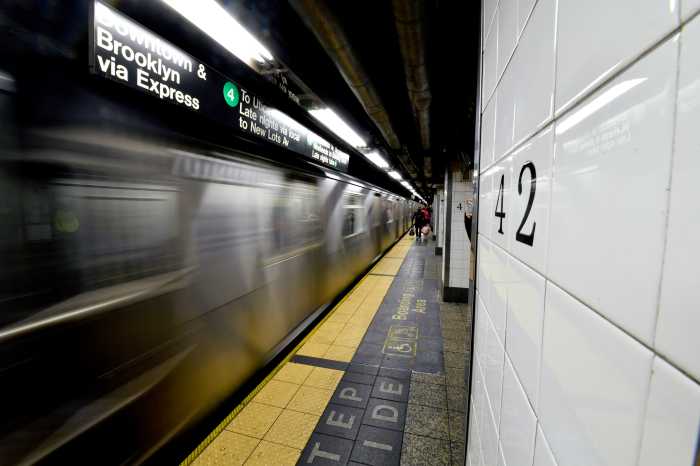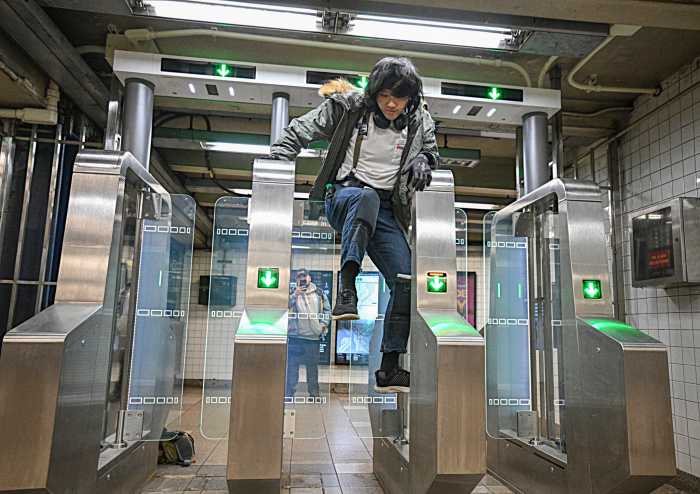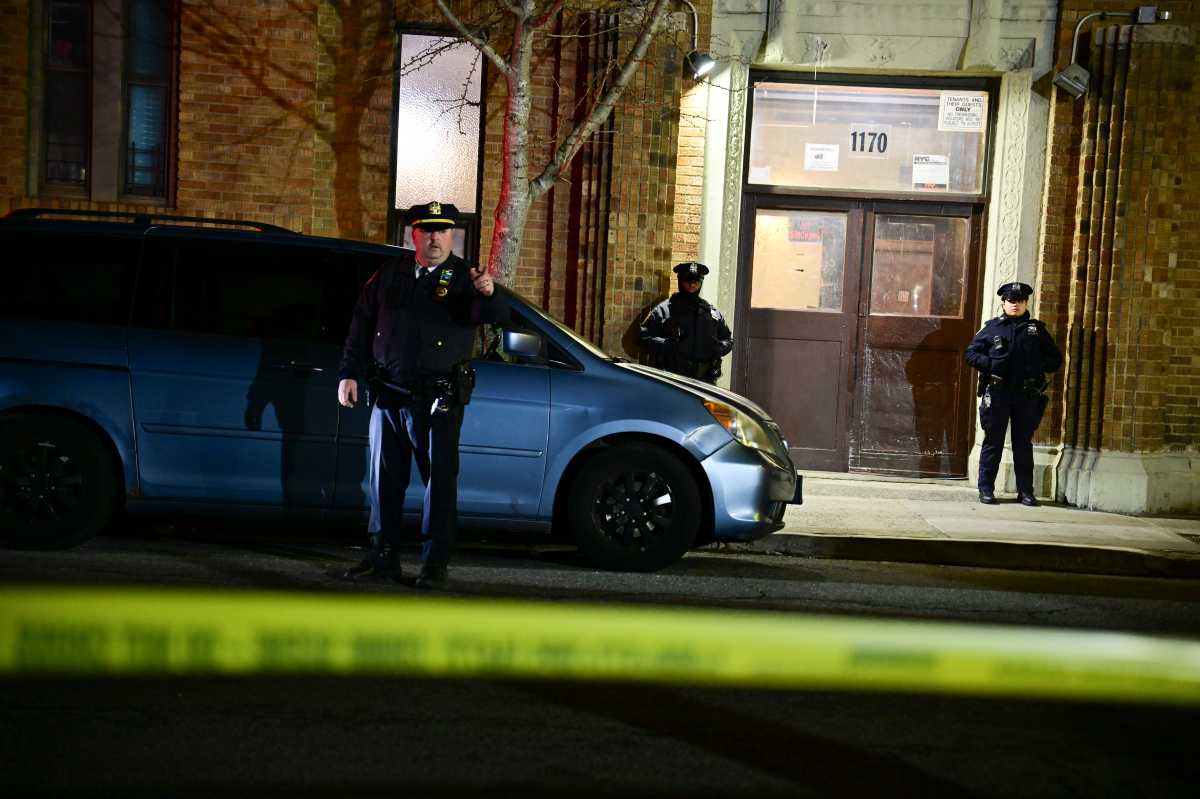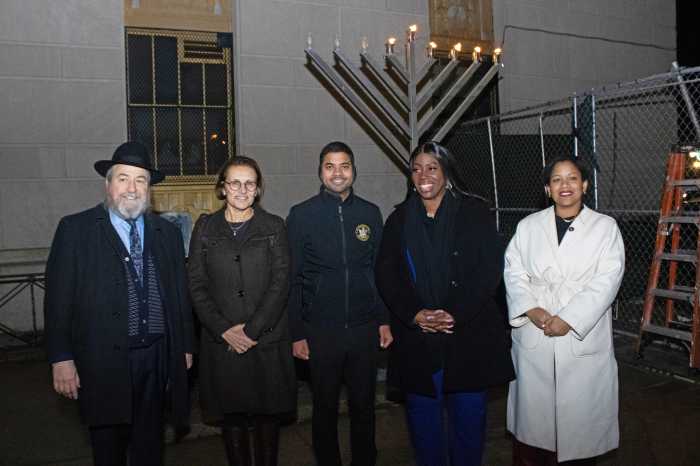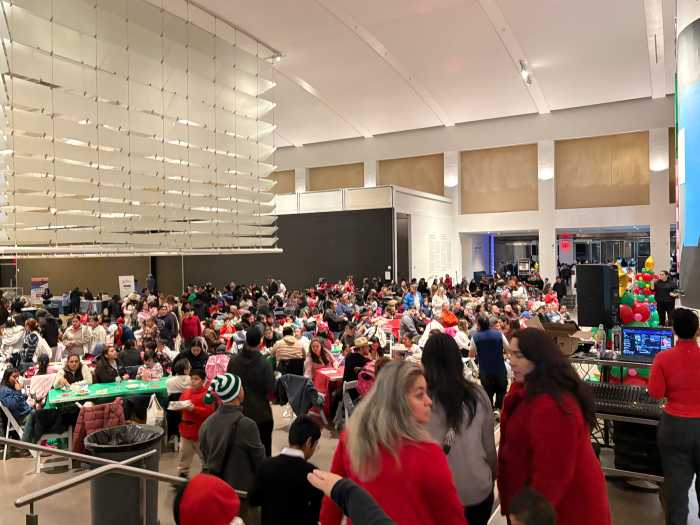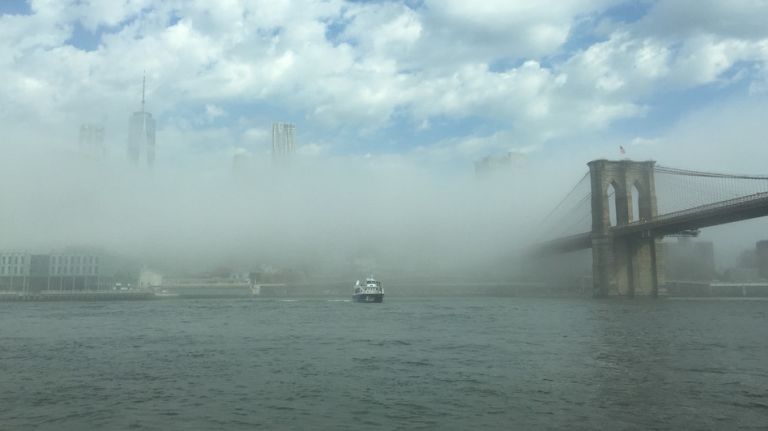
NYC Ferry launched its South Brooklyn route Thursday morning, as operators work to reduce delays primarily caused by an high demand for the service.
The new route launched at 6:30 a.m. on Thursday, carrying commuters from Bay Ridge to Wall Street/Pier 11, making stops along the way in Sunset Park, Red Hook and Brooklyn Bridge Park’s Pier 6 and Pier 1 at the price of $2.75 a ticket.
“It’s definitely a nice option to get into Manhattan,” said Tom Grommell, 61, an insurance broker from Bay Ridge. Sitting in a nearly empty ferry boat, he was one of the route’s first customers. “I might take it more often if I can keep getting a seat.”
Indeed, the early morning crowds were meager on the inaugural ride as Lunch Box — the boat’s name, chosen by Bay Ridge schoolchildren — navigated its path. City officials estimated about a dozen riders boarded the first Bay Ridge boat, but predicted larger crowds during the peak of rush hour.
At a ceremony celebrating the launch of the route Wednesday, officials heralded the route as a new option for transit deserts like Bay Ridge and Red Hook.
“The ‘R’ in R train stands for ‘rarely,’ so if you have the R train blues, mosey on down to the 69th Street Pier and join a new way to travel,” said Brooklyn Councilman Vincent Gentile.
But the NYC Ferry will be running even more infrequently than the infamous R train. Boats will leave docks every half hour during peak service and every 45 minutes at other times. Service will run between 6:30 a.m. and 9 p.m.
From Red Hook, Mayor Bill de Blasio boasted that taking the ferry will cut down residents’ commutes to Manhattan by 20 minutes.
“Travel time will literally be cut in half and that will allow for so much more opportunity and a better way of life,” de Blasio said. “It just fundamentally changes people’s lives if they can get to where they need to go more easily — if they know it’s not going to be such a hassle and if they know it’s going to be simple.”
It might not be that clear cut for Bay Ridge residents. The ferry will only shave commutes from Bay Ridge to Wall Street/Pier 11 down by a minute. A one-seat ride on the R train takes about 50 minutes, the ferry route, 49 minutes.
That’s why Grommell said he might only be taking the boat twice a week to his job downtown. “But the boats are nice. I think the service could be popular,” Grommell said.
‘GOOD PROBLEM TO HAVE’
The city is spending $335 million to launch NYC Ferry on top of an additional operating cost of $30 million per year. But service hasn’t been as simple or hassle-free as the mayor stated.
NYC Ferry experienced frequent delays as the city and ferry operators, Hornblower, grapple with much higher demands than they expected during an aggressive launch that came with only five of 20 to-be-built vessels delivered. The first month of service saw 243,000 trips on the East River and Rockaway routes, about 93,000 more than anticipated, according to the mayor’s office. And unexpected mechanical issues with boats (which the city says it has worked out) exacerbated delays.
The demand-related delays are a “good problem to have,” de Blasio said Wednesday, adding that the city would consider buying larger boats if necessary.
“It’s a good problem to have when more and more people are taking ferries than expected,” de Blasio said.
Since Hornblower launched its Rockaway route and absorbed the East River ferry route on May 1, service has been hit with cancellations or delays each week as the company grapples with a higher demand than anticipated as well as mechanical issues with its 150-person capacity vessels, which are smaller than a single subway car. The city estimated 16,000 monthly riders for the Rockaway route. Instead, the route handled about 50,000.
“This is just part of the experience of rolling out a new system, starting it early and experiencing a lot of ridership,” said James Patchett, president and CEO of the city’s Economic Development Corporation, which is overseeing the service. The EDC did not have an official tally of delays for the first month.
These comments were slightly more measured than those the administration made when the NYC Ferry service first launched, when officials claimed it could be more reliable than the subway.
“Not only is it a fast and efficient way to get to work, but it’s also reliable. So that means when the A train is out, the ferry service is still going to be running,” said Patchett while riding the inaugural Rockaway boat that carried commuters into Manhattan.
But on May 7, the same Con Ed power outage that crippled rush hour subway service also caused an oil spill in the East River, wreaking havoc on NYC Ferry service that same day. It was one of several unforeseen issues. President Donald Trump’s first trip back to New York City also caused delays as ferry traffic slowed.
East River ferry riders on Wednesday said there was a noticeable uptick in service delays when Hornblower took over operations from NY Waterway.
“There was nice new boats and big delays,” said Ingrid Stack, an electrician living in North Williamsburg, who believed Hornblower would right its ship. “I think eventually they’ll figure it out.”
Stack estimates that there were frequently delays of 15-20 minutes, but that an increased demand on weekends seemed to especially impact service.
Patchett said on Wednesday the “minor” mechanical issues that took boats out of service have been corrected and addressed on the newer ferry boats as they are delivered to the harbor. There are currently eight NYC Ferry boats running, with another 12 to be added over the course of next year along with three more routes.
“Many of the vessels that we brought into the harbor were out for 24, 48 hours,” said Patchett, referring to the delays. “Our maritime experts say that’s actually very common — you start running a vessel, you put it into [a] stress system where it has a lot of ridership and stopping and starting all the time.”
De Blasio said the city expects the addition of the South Brooklyn route to even out demand. The EDC is also shifting schedules so that boats are coming in and out of docks at different times, which it believes will cut down on loading time.
But the mayor didn’t rule out buying more and even larger boats — likely to cost millions — if demand persisted.
“If we have to keep bringing in more boats to accommodate the need, that’s a blessing. I’d love to do that,” de Blasio said. “We believe right now [the boats] are the right size … but if we need larger boats we’ll make that adjustment.”
Still, Brooklyn residents are optimistic about the new commuting option.
Cody Brgant, 28, a fabrication shop worker who lives in Red Hook and works in Sunset Park, said the service would be a boon for his inner-borough commuting, which is not well-served by other forms of mass transit. If he bikes, he could get to work in 15 minutes he said, while taking MTA bus and subway service could take nearly an hour. A NYC Ferry ride would be about 11 minutes.
“It’ll also help us get to Williamsburg and Greenpoint,” said Brgant, who was on the inaugural ride with his partner. “I’ll be taking it — it’s right outside my doorstep.”
